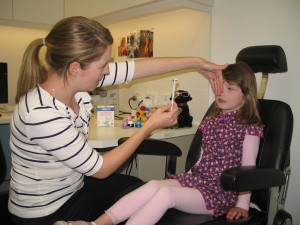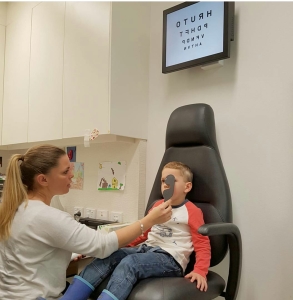What is an Orthoptist?
What is an Orthoptist?
Orthoptists are university trained allied health professionals who “specialise in disorders of eye movement and diagnostic prcedures related to disorders of the eye and visual system”. Orthoptic treatments of certain conditions can relieve visual symptoms and enhance visual performance.
Through a unique set of skills, orthoptists play a crucial role in the detection, diagnosis and management of eye diseases and ocular motility disorders in both adults and children.
Orthoptists specialise in a variety of areas including:
- Children’s vision and pediatrics
- Eye movement disorders – Strabismus and Amblyopia
- Low vision care
- low vision rehabilitation
- General eye disease
- Retinal disorders
- Neurological vision disorders
- Laser eye surgery
- Corneal conditions
- Vision for drivers
- sports vision
Orthoptists are also involved in clinical research and education.
Where do Orthoptists Work?
Orthoptists work in a range of settings including private practices with Ophthalmologists, hospitals, community health areas, clinical research centres, universities or within the ophthalmic sales industry.
How does orthoptics differ from other eye health professions?
Orthoptics Australia describes the profession in more depth:
With speciality university training, orthoptists possess a unique and versatile set of skills in eye health; depending on the setting, orthoptists may be responsible for a variety of eye health practices.
As an example, an orthoptist may be primarily responsible for the pre- and post-operative care of patients with cataracts. This involves undertaking a number of investigations to determine the patient’s potential vision, surgical requirements including the optical lens to be inserted in the eye during surgery and the prescribing of glasses.
To perform these investigations, orthoptists are highly trained in using specialised technology to detect and measure the progression of eye disease – these include instruments such as ultrasonography machines, (A-scans, B-scans and pachymmeters), topogrophers (Ocular Coherence Tomographer (OCT), Orbscans) and retinal cameras.
Orthoptists may also prescribe management programs for those with conditions such as refractive error (need for glasses), double vision, neurological disorders and ocular motility disorders, as well as aiding in the rehabilitation of impaired vision.
In contrast, an optometrist is a primary care practitioner who examines eyes, gives advice on visual problems, and prescribes and fits glasses or contact lenses. If eye disease is detected, an optometrist will generally refer patients to a specialist for further management.
An ophthalmologist is a medical doctor who has undertaken additional specialist training in the diagnosis and management of disorders of the eye and visual system. Ophthalmologists can prescribe medication and perform surgical procedures in the management of eye disease. Often, an orthoptist and ophthalmologist will work collaboratively together in investigating and managing diseases of the eye.
References:
https://www.orthoptics.org.au/about-orthoptics/the-role-of-an-orthoptist/
https://www.myhealthcareer.com.au/health-industry/what-is-an-orthoptist



